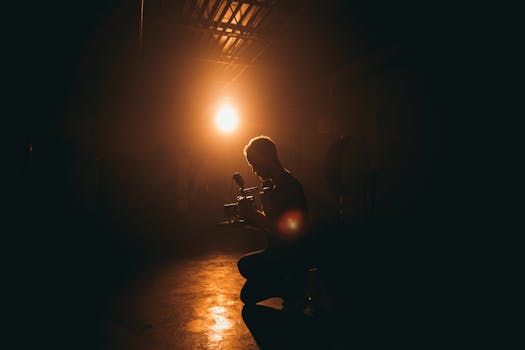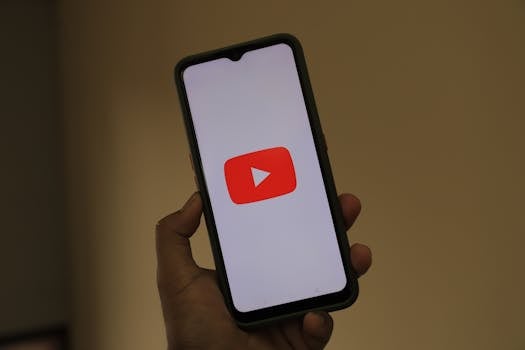Movies
The Most Memorable Cinematic Villains of All Time
Uncover what makes cinema’s greatest villains truly unforgettable with in-depth examples, checklists, tables, and realistic scenarios from film history. Get fresh perspective on iconic movie antagonists.
Advertisement
Everyone remembers where they were the first time a truly great film villain appeared on screen. That chilling presence, cutting glare, or unsettling laugh lingers long after the credits roll. Cinematic villains aren’t just plot devices—they shape the very atmosphere of beloved movies.
From icy masterminds to explosive wildcards, the villains of cinema represent more than evil. They embody our deepest fears, elevate the stakes, and bring out the best in heroes all while pushing storytelling boundaries. The best examples become cultural touchstones.
If you’ve ever left a theater replaying a villain’s words and mannerisms, this article invites you to explore cinematic villains’ impact, their iconic qualities, and why audiences revisit them again and again.
Identifying Unforgettable Villain Traits with Practical Comparison Methods
Spotting what makes cinematic villains truly memorable isn’t just about charisma or wicked schemes. The secret often lies in a balance of unpredictability, relatability, and a unique visual or vocal signature that instantly cements the character in memory.
Viewers searching for top-tier film villains should analyze traits like motivation, performance style, distinct appearance, and the character’s interactions with heroes. Noting these qualities provides a sharper lens for appreciating films and understanding what makes villains unforgettable.
Analyzing Motivation Reveals the Heart of a Villain’s Power
When you break down cinematic villains, motivation jumps to the forefront. Whether it’s revenge, ideology, or a twisted sense of justice, purpose drives every decision onscreen. You might say, “He only wants what was taken,” and instantly relate to a character’s quest.
Viewers see relatable flashes in villains like Magneto, whose tragic backstory colors every choice. This parallel, much like understanding a rival’s goals in chess, keeps audiences engaged and invested in the villain’s next move.
To practice: The next time you watch a movie, ask what core desire drives the villain’s actions. Articulate it in one sentence to clarify their narrative power.
Performance and Voice Create an Indelible Mark on Villainy
Some cinematic villains echo in popular culture thanks to the actor’s mannerisms. Heath Ledger’s Joker owns scenes with a twitch, a lick of his lips, and anarchic laughter. Moviegoers instantly mimic these traits at parties, showing their lasting influence.
Voice adds another layer. Darth Vader, for example, may appear physically imposing, but it’s James Earl Jones’s booming performance that haunts viewers. Tone and cadence are tools crucial for any aspiring or self-aware villain.
To try: Imitate a famous villain’s most memorable line and pay close attention to vocal rhythm. You’ll notice how crucial delivery is to becoming iconic.
| Name | Movie | Signature Trait | Takeaway for Recognition |
|---|---|---|---|
| The Joker | The Dark Knight | Chaotic Twitch and Grin | Look for erratic gestures and unpredictable speech patterns |
| Darth Vader | Star Wars | Deep, Mechanized Voice | Notice how vocal delivery creates intimidation |
| Hannibal Lecter | The Silence of the Lambs | Polite Diction, Chilling Calm | Watch for villain courtesy masking threat |
| Norman Bates | Psycho | Boyish Nervousness | Note moments when a gentle demeanor conceals menace |
| Magneto | X-Men | Ideological Conviction | Listen for justification in villainous monologues |
Building Lasting Villains: Step-by-Step Exploration and Examples
Cinematic villains stay relevant when filmmakers ground them in logical steps and thoughtful design. By following mini checklists and actionable rules, creators and audiences can spot—and create—characters who leave indelible marks.
Expert storytelling rules out one-dimensional evil; instead, step-by-step development brings new angles and longevity to movie antagonists. Small, realistic choices define a villain just as much as grand, cinematic moments.
Checklist: Five Must-Have Features for Impact
Use this practical guide when evaluating or developing cinematic villains. Go beyond surface qualities and see which characteristics provide emotional resonance and story longevity for the antagonists you encounter or create.
- Define a clear internal logic: Craft the villain’s thought process—viewers appreciate when actions align with a coherent belief system, making motivations tangible and relatable.
- Employ a unique design: Give villains standout attire, movements, or an accessory. Visual cues such as Vader’s helmet or Anton Chigurh’s captive bolt pistol enhance memorability.
- Balance cruelty with charm: Unsettle audiences by letting villains display moments of kindness, humor, or respect. A disarming smile, for instance, builds tension through unpredictability.
- Reveal vulnerability: Show a moment of regret, a physical weakness, or emotional backstory. Audiences empathize, increasing investment in the storyline.
- Connect them to the hero: Build a personal stake. Villain-hero relationships, such as Batman and the Joker, spark deeper drama and narrative weight, making climaxes more rewarding.
Following this list raises the bar, crafting cinematic villains that stick with viewers long past the credits.
Script Application: Executing Nuanced Antagonists
Writers and directors benefit from specific script choices. Let a villain address the hero by name, focus the camera on subtle gestures, or provide a signature phrase. These details keep villains grounded, real, and immediately recognizable by fans.
Directors can insert routines—Javier Bardem’s Anton Chigurh flips a coin before key moments, signaling both fate and menace. These methods are tools: build signature moves that audiences recall easily in conversation or imitation.
- Assign a catchphrase with context: A phrase like “Why so serious?” ties mood to identity, making quotations part of everyday language for fans.
- Encourage scene-stealing entrances: First appearances set the emotional tone—Dr. Hannibal Lecter’s polite greeting in his cell doubles as both welcome and warning.
- Use props meaningfully: Villains with iconic weapons, like a lightsaber, instantly become Halloween staples and shorthand for menace at conventions.
- Employ mirrored scenes: Place villains in moments similar to the protagonist’s, but subvert expectations to reflect dark reflections or warnings.
- End with ambiguity: Have an exit or defeat suggest more to come, keeping the character lingering in viewers’ imaginations, which drives sequels and late-night debates.
These script-focused steps help ensure cinematic villains aren’t easily forgotten—but become part of pop culture reference points and ongoing commentary on film’s evolution.
Contrasting Styles: Visual and Psychological Approaches to Villainy
Cinema fans enhance their appreciation by distinguishing visual spectacle from psychological warfare in villain design. Each style offers a different formula for audience engagement—and both gain traction with unique, concrete tools.
Visual and psychological villainy serve as opposite ends of a spectrum. When creators blend both, they build multi-layered threats that linger through cinematic history and conversation.
Striking Visuals: Impactful First Impressions
Villains like Maleficent use bold costumes, elaborate makeup, and theatrical entrances to etch themselves in audience memories. Visually distinct details signal both intent and allure without dialogue. A sweeping cape, pointed horns, or a particular color scheme works immediately upon arrival on screen.
Costume designers can give villains a recurring symbol or color, reinforcing mood. For example, the Green Goblin in Spider-Man connects lime green hues with unpredictable danger. Such visual language instructs future designers to prioritize symbolism when shaping their own cinematic villains.
To try this: Next time you craft or dissect a villain, focus on their silhouette. Ask yourself if you could identify them in a shadow lineup. If yes, their visual power is complete.
Psychological Manipulation and Introspection
Other cinema legends rule with cunning dialogue and subtle emotional tactics. Hans Landa in Inglourious Basterds creates discomfort solely through a smile and measured words, illustrating that menace doesn’t always require forceful spectacle to grip an audience.
Some cinematic villains utilize psychological games—promising reward, threatening silence, or feigning innocence to gain the upper hand. This approach works off viewers’ instincts and empathy, creating characters that feel hauntingly real and deeply unsettling at the same time.
To apply this method: Build a dialogue scene where the villain never raises their voice, but their words carry dread. This tactic makes stakes personal and confrontation intimate.
Villain Evolution: Tracing Decades of Change with Real-World Parallels
Examining villains through the lens of film history reveals shifting audience expectations and industry standards. This perspective maps narrative changes while showing how standout antagonists reflect the eras and cultural moments of their creation.
Fans and critics observe these transformations as they point out which qualities resonate in one decade but feel outdated in another, giving both creators and viewers new rules to identify cinematic villains suited to contemporary tastes.
Classic Arch-Enemies: The Foundations of Villain Tropes
Golden-age villains—like Dracula or the Wicked Witch of the West—relied heavily on distinctive costuming, dramatic gestures, and straightforward motives. Their simplicity mirrors early cinema’s reliance on clear good versus evil dichotomies, and audiences would echo “She’s the bad guy!” without hesitation.
Scripts encouraged exaggerated expression; eyes widened, hands wrung, cackles filled the soundtrack. While these hallmarks risk feeling dated, they teach modern viewers how clarity and boldness can create instantly iconic personalities still referenced today.
To incorporate: Use direct contrast between villain and hero’s moral codes when dramatizing classic archetype scenarios, reinforcing the stakes and ensuring audience rooting interest remains clear.
Modern and Subversive: Redefinitions for New Generations
Recent cinematic villains embrace ambiguity, combining relatable backstories, personal weaknesses, and moral gray areas. Erik Killmonger from Black Panther, for example, introduces motivations rooted in generational injustice, making audiences pause and reconsider definitions of good and bad.
Contemporary films also subvert older tropes—giving women, people of color, and even children prominent villain roles with greater nuance. These evolutions enable audiences to see their own experiences, deepening empathy and encouraging discussions around justice and redemption.
To try this: Add a nuanced goal or wound to a villain’s design, and notice how their relationships with other characters gain complexity, resulting in richer conversation about cinematic villains at every screening.
Enduring Impact: Why Cinematic Villains Still Shape Our Movie Obsession
Great cinematic villains make their movies unforgettable, anchoring stories with distinct motives, appearances, and the raw energy that magnetizes viewers. Every generation returns to these figures, imitating voice lines, analyzing motives, and comparing new entries to the legends.
As films continue to evolve, these villains provide benchmarks for ambition, creativity, and emotional resonance. They fuel debates and inspire countless Halloween costumes, debates, and works of pop culture homage across decades.
When you reflect on your favorite film antagonists next, notice which traits, scenes, and performances keep them alive. In every discussion of cinema, cinematic villains remind us that even darkness has depth, and storytelling thrives on both hero and nemesis.
Trending Topics

How Costume Choices Define a Character’s Story: The Impact of Costume Design Film
Learn how costume design in film defines identity, builds emotion, and visually tells a character’s evolution through every scene.
Keep Reading
How Editing Turns Raw Footage Into Movie Magic: The Power of Film Editing
Learn how film editing transforms raw footage into seamless visual storytelling that drives rhythm, tone, and emotion.
Keep Reading


